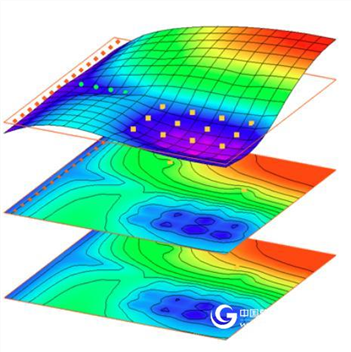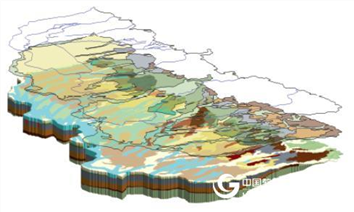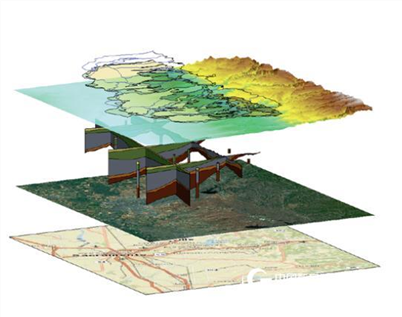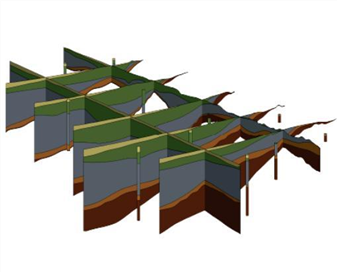GMS software was developed by Aquaveo, an engineering services company with years of experience in groundwater solutions. In October 2016, Aquaveo LLC introduced the latest version of GMS 10.2 with many new features.
The important features of GMS 10.2 are updated as follows:
PEST for MODFLOW-USG
GMS now supports parameter estimation for single-core and multi-core PEST and parallel PEST MODFLOW-USG modules.
Clip Display Option
Creating a cut widget can be used to hide part of the UGrid. The entire cell or part can be omitted.
Import 2D & 3D UGrid Points
With the Import Wizard., you can now import and filter 2d and 3d UGrid points.
Delete UGrid Points
You can select and delete single or multiple UGrid points as needed.
Delete UGrid Cells
Single or multiple UGrid cells can be selected and deleted as needed.
Constraints
Constraints (formerly known as "UGrid Structure") allows you to determine the type of cells and the allowed operations for editing and how they are executed on UGrid.
Lock/Unlock for Editing
Prevent accidental editing of UGrid such as dragging selected points to lock or unlock UGrid. By default, UGrids are locked.
Graphics Smoothing
Adjusting the sampling level results in a smooth, anti-aliased pattern.
Swap Edge Tool
With the Swap Edge Tool, you can choose the commonality of two adjacent triangles that will result in the edges to be swapped, as long as the shape of the quadrilateral is not concave by the two triangles.
Split / Merge Tool
With the Split / Merge tool selected, selecting the edge of the triangle will cause the adjacent edges of the two triangle elements to merge into a quadrilateral element to provide the shape of the quadrilateral. The two triangles are not concave. The tool can also be used to undo merges or "unmerge" a quadrilateral element.
CONTINUE in NWT Solver
Allows the MODFLOW-NWT model to continue to run even if the model does not aggregate
Tool for Cutaway Views
Create a section view to cut the face by manipulating the position and orientation.
Export to Shapefile
You can export UGrids polygons or point shapefiles (*.shp) by right-clicking on the UGrid project in the Project Explorer.
Triangulation of Points
UGrid points can be analyzed from forming a Delaunay triangle irregular network or tin.
Points Not Displayed
If the contours are running, color identification will be based on the contours status.
Graphics Library Selection
Log in to GMS using the software icon or system icon
Selection Echo Commmand
New window menu option to open the Selection Echo window
Convert to CAD with UGrid
UGrid data can now be converted to CAD files
External Plot Window
The Plot window is now displayed outside the main GMS window
Double-click Properties
Double-click to open the properties of various Project Explorer items.
Properties Location
The Properties menu command is now at the bottom of the menu.
Improved Wizard Font
Improved font appearance of the Text Import Wizard
Improved Legend
Improved leg color fill
Accelerate and simplify model building with conceptual model approach
GMS pioneered the concept modeling approach, using familiar GIS objects: points, arcs, and polygons to create a conceptual model from a high-level model of the build. Use conceptual modeling methods to update and change models as needed to handle large, complex models in a simple and efficient way.

Performance optimized 3D visualization
GMS is the most advanced software system for handling groundwater simulations in a three-dimensional environment.
Interact with models in real 3D
Optimize OpenGL graphics to improve hardware rendering
Create realistic renderings
Generate animations for placement in PPT or web pages
Drape graphics and control opacity in the model
Comment - Add North Arrow, Ruler Bar, Reference Graphics, Company Logo and more.....

Import various data formats and images
Modeling requires data from a variety of sources, and GMS can import a variety of different file types:
Raster images include support for geographic coordinate positioning and projection
Topographic map and elevation data
Drilling data including stratigraphic and geophysical data
Local MODFLOW file
MODFLOW files from VisualMODFLOW, GroundwaterVistas and PMWin
Network data services such as TerraServer
ArcGIS geodatabase and Shapefiles
CAD files include .dwg, .dgn, and .dxf formats
Global projection support includes Cartesian and GeographicSystems
File import wizard for delimited text files and spreadsheets

Advanced features
From cross-section editing to advanced probabilistic statistics, GMS provides an unparalleled underground modeling tool.
1. Generate iso-surfaces data from 3D data to visual shapes
2. Cut the cross section anywhere with 3D data
3. 2D and 3D geostatistics—Kriging, IDW, and Natural Neighbor
Robust and fast algorithm to create from horizon to solid

System Requirements
Operating system: Windows® XP*, Windows Vista®, Windows 7, Windows 8/8.1 or Windows 10
RAM: 4 GB (8GB or larger)
CPU: GMS is CPU intensive, and some models and utilities integrated with GMS can utilize multiple processor cores simultaneously.
Graphics card: All display functions are enabled and must support OpenGL 1.5 or higher. It is highly recommended to use a dedicated graphics card, and integrated graphics are often problematic.
Display resolution: 1920 x 1080 or larger.
More detailed information about the GMS software and a tutorial on using the GMS software can be found on the China Science Software Network.
Children'S Desk,Home Student Desk,Simple Children'S Desk,Student Dormitory Desk
vchomy , https://www.vichenivchomy.com
